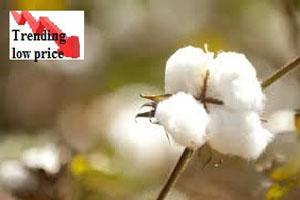
Spinning mills likely to revive with trending lower cotton prices
YarnsandFibers News Bureau 2017-12-28 15:00:00 – New DelhiCotton prices in India have been trending lower in recent months and it is likely to remain low for a while for several reasons which is a big concern for cotton growers, but spinners are finding the going good after a long-drawn struggle endured over many quarters. Sankar-6 grade cotton is selling at Rs107 per kg, far lower than the high of Rs130-140 per kg touched in August.
The forecast that cotton prices are likely to remain low is the 9% increase in cotton output to 37.7 million bales expected during the current cotton year. One bale is 170kg. Also some northern states are likely to see a bumper crop, while southern states’ output was hurt by pest attacks and untimely winter rains.
On the whole, higher acreage came under cotton cultivation as the past two years had seen cotton prices steadily rising, albeit on account of lower output. Besides, the poor quality of the output this time may keep a tight lid on prices.
In fact, both domestic and global conditions are supporting a downtrend in cotton prices. Global cotton production is on an upswing. After a partial recovery in calendar year 2017 from a 13-year low in 2016, global output is estimated to pick up, growing by a healthy 11-13% in 2018.
Any improved momentum in imports by China may support a recovery in global cotton prices. China’s subdued import of cotton, following a knee-jerk policy change designed to support the domestic industry, had upset the price cycle in international markets. China is among the leading consumers of cotton and cotton yarn.
With news of higher output following the harvest in October, cotton prices are trending lower. Certainly, low cotton prices bring succour for the spinning industry, which has posted weak sales growth and profit margins for the last four quarters.
In a report, credit rating agency Icra Ltd traces the reasons for pressure in spinning mills. In the quarter ended September 2016, the volumes were affected because of a sharp decline in exports to China, the note ban impact affected volumes in the following quarter. After a narrow window of demand recovery thereafter with conclusion of Chinese cotton auctions, demand pressures reverted from March 2017 onwards.
And of course, the vagaries of the goods and services tax because of a multitude of stages in the textile production chain, adversely effected production and demand for yarn in the last two quarters.
Market Intelligence
Ask for free sample Report

experience
Customer Base
dedicated team
Countries Served Worldwide









